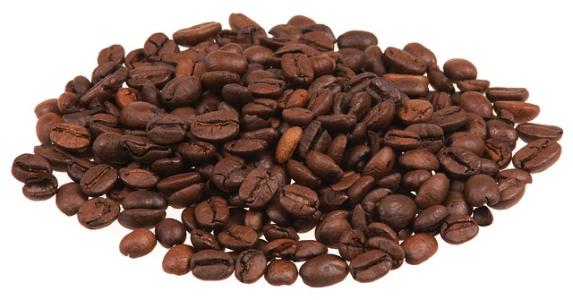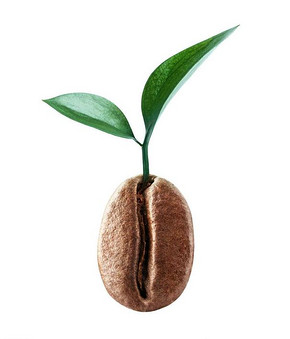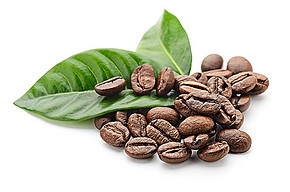How did coffee spread to Latin America?
Follow the caf é (Wechat official account vdailycom) and found that Beautiful Cafe opened a small shop of its own.
Latin America is famous for its coffee production and export volume, ranking first in the world.
In 1979, coffee production in Latin America was 3,264,000 tons, accounting for about 65.6 percent of the world's total output, and coffee exports were 2.217 million tons, accounting for about 60 percent of the world's total exports; coffee export income was more than 7.10000527 billion US dollars, accounting for about 8.8 percent of Latin America's total export income, making it the most important source of foreign exchange earnings in the region besides oil exports. Therefore, coffee is praised as the "green gold" in America. At present, coffee is produced in more than 20 countries in Latin America, with a planting area of 5.463 million hectares, accounting for 57% of the total coffee planting area in the world. Brazil is the largest coffee producer in Latin America and the world, and is known as the "coffee kingdom". In 1979, Brazil produced 1.295 million tons of coffee, accounting for 26 percent of the world's total output, ranking first in the world. In the same year, Colombia produced 762,000 tons of coffee, accounting for about 15.3% of the world's total output, second only to Brazil. Together, the annual coffee production of Mexico and six Central American countries is about the same as that of Colombia. Countries such as Peru, Ecuador and Venezuela generally produce between 60,000 and 100,000 tons of coffee a year. Coffee in Latin America is not only of high output, but also of good quality. As we all know, in the international market, there is a difference between hard coffee and soft coffee, which is largely due to different planting zones and planting methods.

The cultivation and production of coffee in the 17th century has always been monopolized by Arabs and is of great value in Europe. Only the upper echelons of Europe can drink coffee. Until 1690, a Dutch captain sailed to Yemen, got some coffee seedlings and began to plant successfully in Dutch India (present-day Indonesia). In 1727, the wife of a diplomat in Dutch Guiana gave some coffee seeds to a Spaniard in Brazil, where he planted them with good results. The climate of Brazil is very suitable for the growth of coffee. Since then, coffee has spread rapidly in Latin America, and coffee whose prices have fallen due to mass production has become an important drink for Europeans.
Important Notice :
前街咖啡 FrontStreet Coffee has moved to new addredd:
FrontStreet Coffee Address: 315,Donghua East Road,GuangZhou
Tel:020 38364473
- Prev

Introduction to roasting of coffee beans in Latin America
Following Cafe (official Wechat account vdailycom) found that the Beautiful Cafe opened a small shop of its own. In 1721, French naval officer Gabriel Mathieu de Clieu brought the first coffee sapling from Africa to the Latin American island of Martinique, all of which was the origin of coffee cultivation in Latin America. Because France at that time was in
- Next

Introduction of well-known representative coffee in Latin America
Following Jiabei (Wechat official account vdailycom) found that Beautiful Cafe opened a small shop of its own. Guatemala well-known representative coffee: Antigua (Antigua), Vivette Nango (Huehuetenango) the latitude of Guatemala is about 15 degrees, the left is adjacent to the Pacific Ocean, the right is the Caribbean Sea. The Sierra Mountains on this side of the Pacific are Guatemala horses.
Related
- Detailed explanation of Jadeite planting Land in Panamanian Jadeite Manor introduction to the grading system of Jadeite competitive bidding, Red bid, Green bid and Rose Summer
- Story of Coffee planting in Brenka region of Costa Rica Stonehenge Manor anaerobic heavy honey treatment of flavor mouth
- What's on the barrel of Blue Mountain Coffee beans?
- Can American coffee also pull flowers? How to use hot American style to pull out a good-looking pattern?
- Can you make a cold extract with coffee beans? What is the right proportion for cold-extracted coffee formula?
- Indonesian PWN Gold Mandrine Coffee Origin Features Flavor How to Chong? Mandolin coffee is American.
- A brief introduction to the flavor characteristics of Brazilian yellow bourbon coffee beans
- What is the effect of different water quality on the flavor of cold-extracted coffee? What kind of water is best for brewing coffee?
- Why do you think of Rose Summer whenever you mention Panamanian coffee?
- Introduction to the characteristics of authentic blue mountain coffee bean producing areas? What is the CIB Coffee Authority in Jamaica?

